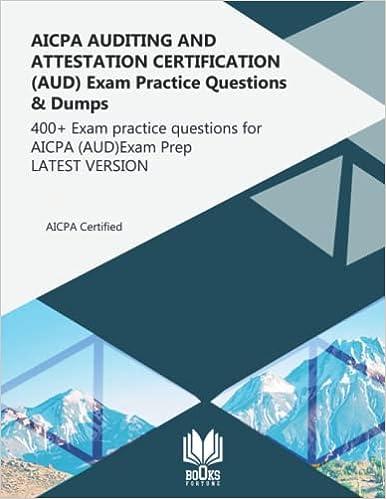Question
King City Specialty Bikes (KCSB) produces high-end bicycles. The costs to manufacture and market the bicycles at last year's volume level of 2,100 bicycles per
King City Specialty Bikes (KCSB) produces high-end bicycles. The costs to manufacture and market the bicycles at last year's volume level of 2,100 bicycles per month are shown in the following table:
| Unit manufacturing costs | ||
| Variable | $259 | |
| Fixed | 140 | |
| Total unit manufacturing costs | $399 | |
| Unit nonmanufacturing costs | ||
| Variable | 61 | |
| Fixed | 136 | |
| Total unit nonmanufacturing costs | 197 | |
| Total unit costs | $596 |
KCSB expects to produce and sell 2,300 bicycles per month in the coming year. The bicycles sell for $640 each.
KCSB receives a proposal from an outside contractor who, for $150 per bicycle, will assemble 850 bicycles per month and ship them directly to KCSB's customers as orders are received from KCSB's sales force. KCSB would provide the materials for each bicycle, but the outside contractor would assemble, box, and ship the bicycles. The variable manufacturing costs would be reduced by 35% for the 850 bicycles assembled by the outside contractor, and variable nonmanufacturing costs for the 850 bicycles would be cut by 55%.
KCSB's marketing manager thinks that it could sell 70 specialty racing bicycles per month for $6,000 each, and its production manager thinks that it could use the idle resources to produce each of these bicycles for variable manufacturing costs of $5,700 per bicycle and variable nonmanufacturing costs of $210 per bicycle.
If KCSB produces the mix of 1,450 regular bicycles plus 70 racing bicycles instead of producing all 2,300 regular bicycles, it would be able to save 10% of fixed manufacturing costs; fixed nonmanufacturing costs would be unchanged.
REQUIRED [Note: Round unit cost computations to the nearest cent]
How much will KCSB's monthly profits change if it accepts the proposal for the 850 bicycles and uses the idle resources to produce the 70 racing bicycles? (Note: if the costs of accepting the proposal are less than the costs of rejecting it, enter the difference as a positive number; if the accept costs are more than the reject costs, enter the difference as a negative number.)
Step by Step Solution
There are 3 Steps involved in it
Step: 1

Get Instant Access to Expert-Tailored Solutions
See step-by-step solutions with expert insights and AI powered tools for academic success
Step: 2

Step: 3

Ace Your Homework with AI
Get the answers you need in no time with our AI-driven, step-by-step assistance
Get Started


